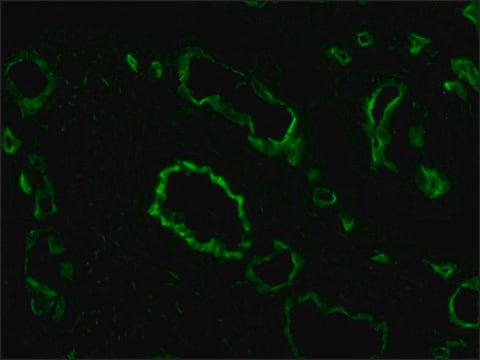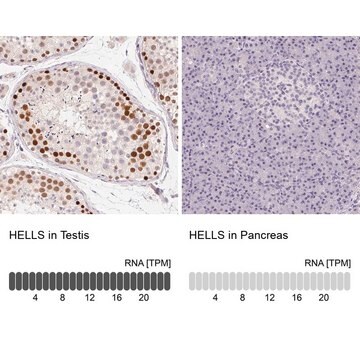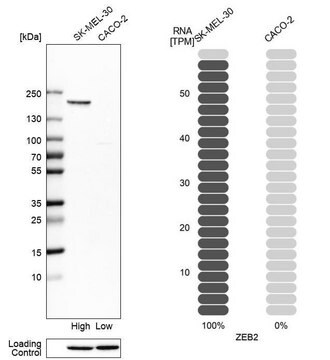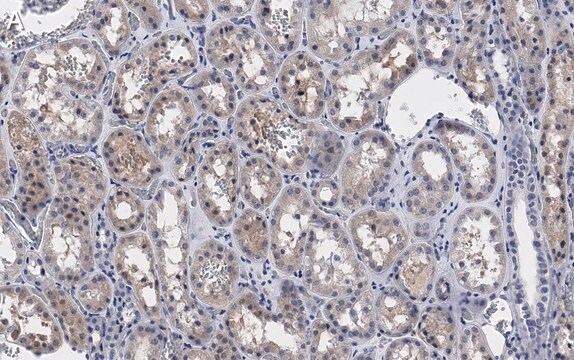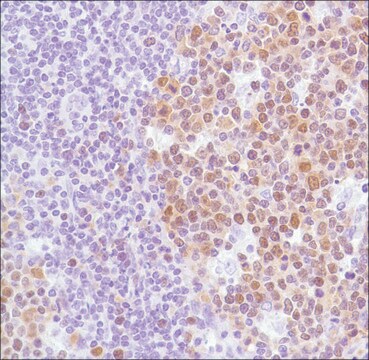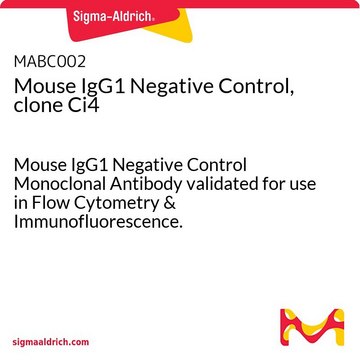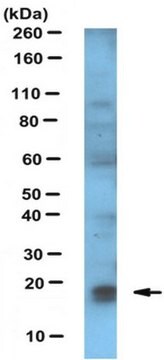SAB4200854
Przeciwciało anty-FAT10, mysie monoklonalne
clone FAT10-7, purified from hybridoma cell culture
About This Item
Polecane produkty
forma przeciwciała
purified from hybridoma cell culture
Poziom jakości
klon
FAT10-7, monoclonal
Formularz
liquid
reaktywność gatunkowa
human, mouse
stężenie
~1 mg/mL
metody
immunoblotting: 4-8 μg/mL using whole lysate of human hepatocellular carcinoma HepG2 cells
izotyp
IgG1
numer dostępu UniProt
Warunki transportu
dry ice
temp. przechowywania
−20°C
docelowa modyfikacja potranslacyjna
unmodified
Opis ogólny
Specyficzność
Zastosowanie
Działania biochem./fizjol.
FATylacja odgrywa ważną rolę w wielu procesach komórkowych, od utrzymania komórek po naprawę DNA. Zrozumienie mechanizmu FAT10 i znalezienie jego dalszych substratów jest ważne dla ujawnienia jego potencjalnej roli w nowotworzeniu wywołanym stanem zapalnym.1-7
Postać fizyczna
Przechowywanie i stabilność
Oświadczenie o zrzeczeniu się odpowiedzialności
Kod klasy składowania
12 - Non Combustible Liquids
Klasa zagrożenia wodnego (WGK)
WGK 1
Temperatura zapłonu (°F)
Not applicable
Temperatura zapłonu (°C)
Not applicable
Wybierz jedną z najnowszych wersji:
Certyfikaty analizy (CoA)
It looks like we've run into a problem, but you can still download Certificates of Analysis from our Dokumenty section.
Proszę o kontakt, jeśli potrzebna jest pomoc Obsługa Klienta
Masz już ten produkt?
Dokumenty związane z niedawno zakupionymi produktami zostały zamieszczone w Bibliotece dokumentów.
Nasz zespół naukowców ma doświadczenie we wszystkich obszarach badań, w tym w naukach przyrodniczych, materiałoznawstwie, syntezie chemicznej, chromatografii, analityce i wielu innych dziedzinach.
Skontaktuj się z zespołem ds. pomocy technicznej